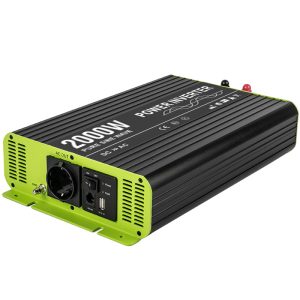On-grid inverters play a crucial role in the renewable energy sector, particularly in solar power systems. These devices are essential for converting direct current (DC) generated by solar panels into alternating current (AC) that can be fed into the electrical grid or used by local electrical networks. This article delves into the specifics of on-grid inverters, covering their functionality, benefits, and considerations.
Understanding On-Grid Inverters
Functionality and Operation
An on-grid inverter, also known as a grid-tie inverter, synchronizes with the frequency of the electrical grid to ensure that the energy produced by solar panels can be utilized efficiently within homes or fed back into the grid. Unlike off-grid systems, on-grid systems do not require batteries since they rely on the grid to supply electricity when solar production is insufficient.
Key Features
On-grid inverters come with several features designed to maximize the efficiency and safety of solar power systems. These include maximum power point tracking (MPPT), which ensures solar panels operate at their optimal power output, and anti-islanding protection, which safely disconnects the solar system from the grid in the event of a power outage to protect utility workers.
Benefits of On-Grid Inverters
Cost Savings and Efficiency
On-grid inverters allow homeowners and businesses to reduce their electricity bills significantly. By feeding excess solar power back into the grid, users can earn credits through net metering policies. Modern on-grid inverters exhibit high efficiency, typically ranging between 95% to 98%, ensuring minimal energy loss during conversion.
Environmental Impact
Using on-grid inverters in solar power systems contributes to reducing carbon footprint by harnessing renewable energy. This shift towards cleaner energy sources can significantly impact combating climate change.

Considerations When Choosing an On-Grid Inverter
Power Capacity and Specifications
The power capacity of an on-grid inverter is a critical consideration, as it must match the output of the solar panel array. Inverters are available in various sizes, ranging from small residential units of a few kilowatts to large commercial systems of several megawatts.
Cost and Return on Investment
The cost of an on-grid inverter varies depending on its capacity, features, and brand. A typical residential inverter might range from $1,000 to $3,000. However, the return on investment is favorable, with most systems paying for themselves through reduced utility bills within 5 to 10 years.
Quality and Reliability
Selecting a high-quality on-grid inverter is vital for the long-term success of a solar power system. A reliable inverter can have a lifespan of over 20 years, requiring minimal maintenance. It is essential to choose inverters from reputable manufacturers that offer solid warranties and customer support.
Conclusion
On-grid inverters are indispensable for integrating solar power into the electrical grid efficiently and safely. By understanding their functionality, benefits, and considerations, consumers can make informed decisions that align with their energy needs and environmental values. With advancements in technology, the adoption of on-grid inverters is set to accelerate, further promoting the use of renewable energy sources.